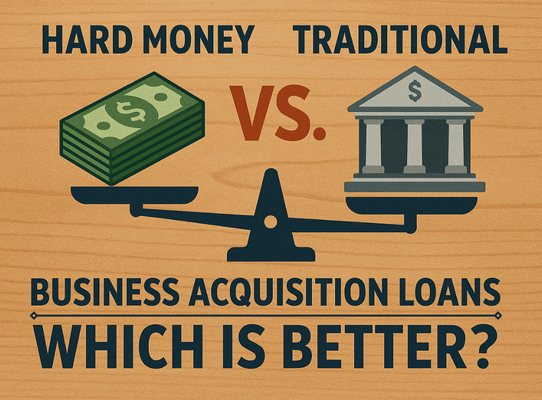Raising capital through borrowing helps businesses scale faster, launch new projects, and fill cash flow gaps. Interest on that borrowed money, however, comes with long-term consequences.
The cost of debt and company value are directly linked. Investors look closely at how much a business pays to borrow because it impacts returns. Higher debt costs reduce profits, strain liquidity, and hurt valuations.
Understanding how the cost of debt affects business valuation is key to making smarter decisions about financing. Knowing the impact of the cost of debt on valuation helps protect cash flow, maintain growth, and improve financial standing.
What Is the Cost of Debt?
The cost of debt shows how much a business pays to borrow money. It’s the effective interest rate on loans, bonds, or other debt instruments. Lower borrowing costs support stronger operations and better financial outcomes.
Use this formula to calculate the after-tax cost of debt:
- Cost of Debt = Interest Rate × (1 – Tax Rate)
A company paying 8% interest and a 30% tax rate has an after-tax cost of 5.6%.
After-tax cost of debt implications matter because interest is tax-deductible. Lower debt costs mean higher net cash flow, which leads to improved stability, better lending terms, and healthier capital structure and business valuation over time.
How the Cost of Debt Impacts Business Valuation
High borrowing costs can quietly drain business value. Understanding how interest impacts profit, risk, and investor confidence helps reveal how the cost of debt affects business valuation.
Higher Debt Costs = Lower Business Valuation
High-interest loans cut into profits. Lower profits decrease market value. Businesses carrying expensive debt face negative pressure from both lenders and investors. High interest expense and profitability concerns reduce confidence in long-term returns.
Buyers and investors weigh the debt burden on company value when deciding how much a business is worth. Companies with lean, low-cost debt attract better offers and strategic partnerships.
Firms looking to maximize business potential with business factoring often do so to lower short-term borrowing strain. Reducing interest payments directly increases value.
Understanding how the cost of debt affects business valuation gives decision-makers an edge when restructuring or refinancing.
Weighted Average Cost of Capital (WACC)
Investors use WACC to estimate a business’s fair value. It blends the cost of equity and cost of debt based on how much a company relies on each.
- WACC = (E/V × Re) + (D/V × Rd × (1 – Tc)
- E = Equity, D = Debt, V = Total Capital
- Re = Cost of Equity, Rd = Cost of Debt, Tc = Tax Rate
High debt costs raise WACC, which lowers the business value in the cost of debt in discounted cash flow (DCF) models. A lower WACC boosts valuation. Businesses benefit by keeping borrowing costs under control, which reduces the weighted average cost of capital (WACC) impact on future earnings.
Controlling WACC shows strong financial discipline and supports sustainable growth.
How the Cost of Debt Affects Financial Health
Rising debt costs do more than reduce profit-they can directly threaten day-to-day operations. Financial stability depends on smart borrowing decisions and manageable interest obligations over time.
Here’s how it impacts the overall financial health of a business:
Cash Flow and Liquidity
High-interest payments cut into operating cash, limiting how much a business can spend on payroll, inventory, or new investments. Tight debt servicing and cash flow issues force owners to delay decisions or miss opportunities.
Poor liquidity makes it harder to react to changing conditions, creating stress on everyday operations. Lowering interest payments helps maintain steady cash and keeps the business running efficiently without disruptions.
Profitability and Margins
Large debt payments reduce net income. These interest expense and profitability issues lead to tighter margins and fewer resources for growth. Investors often avoid businesses that cannot show healthy earnings.
Slower profit growth hurts company value. Managing debt wisely protects earnings and improves long-term performance. Higher margins make a business more appealing to lenders and buyers looking for financially sound operations.
Debt-to-Equity Ratio and Creditworthiness
A high debt-to-equity ratio signals more risk for banks and investors. Borrowing becomes expensive or unavailable. Keeping a balanced ratio helps maintain credit rating and valuation, making it easier to access affordable capital.
Healthy equity positions give businesses a stronger image, greater control over financial decisions, and better resilience against market changes or economic stress.
Explore Assets-Based Lending: A Lifeline for Businesses with Strong Assets to learn more about supporting your company’s borrowing strategy in challenging financial situations.
Strategies to Manage the Cost of Debt and Boost Business Value
Improving valuation means managing borrowing smartly. Simple, targeted changes in financing can protect your bottom line and attract better investors.
Here are the key strategies to manage the cost of debt:
- Refinance High-Interest Loans: Replace expensive loans with better terms to lower payments, free up cash, and reduce the cost of capital influence on overall financial performance and long-term business value.
- Improve Creditworthiness: Make timely payments, reduce unnecessary expenses, and increase reserves to improve your credit score and reduce your pre-tax cost of debt impact when seeking new financing opportunities.
- Use Debt Strategically: Balance equity and debt carefully to maintain a strong capital structure and business valuation, while keeping the weighted average cost of capital (WACC) impact as low as possible.
- Enhance Profitability: Boost revenue and cut costs to improve earnings. Stronger profits reduce financial risk and business worth concerns, giving your company more flexibility and better control over its financial future.
Learn how to spot financial issues early in Financial Red Flags: Spotting Trouble Before It’s Too Late, and protect your valuation.
Conclusion
Understanding how the cost of debt affects business valuation gives business owners the power to make better financial decisions. Lower borrowing costs improve cash flow, reduce financial risk and business worth concerns, and increase investor trust.
Smart debt management improves profitability ratios and debt costs, strengthens capital structure and business valuation, and supports long-term stability. Monitoring debt servicing and cash flow, managing the debt-to-equity ratio effect, and reducing the cost of capital influence lead to stronger performance.
Sustainable debt levels help businesses withstand pressure, boost value, and protect future earnings. Every decision about borrowing shapes how investors view your company.













